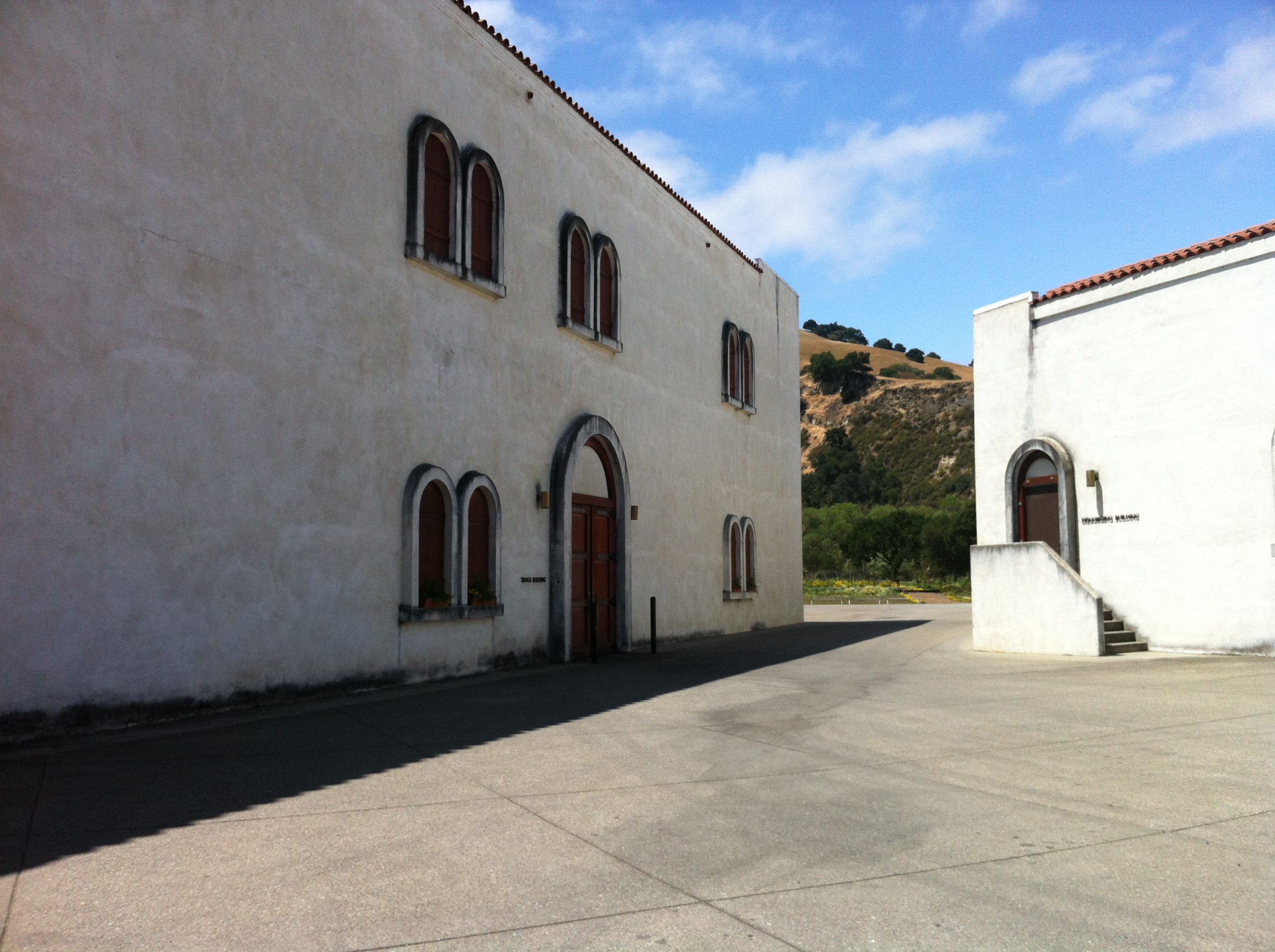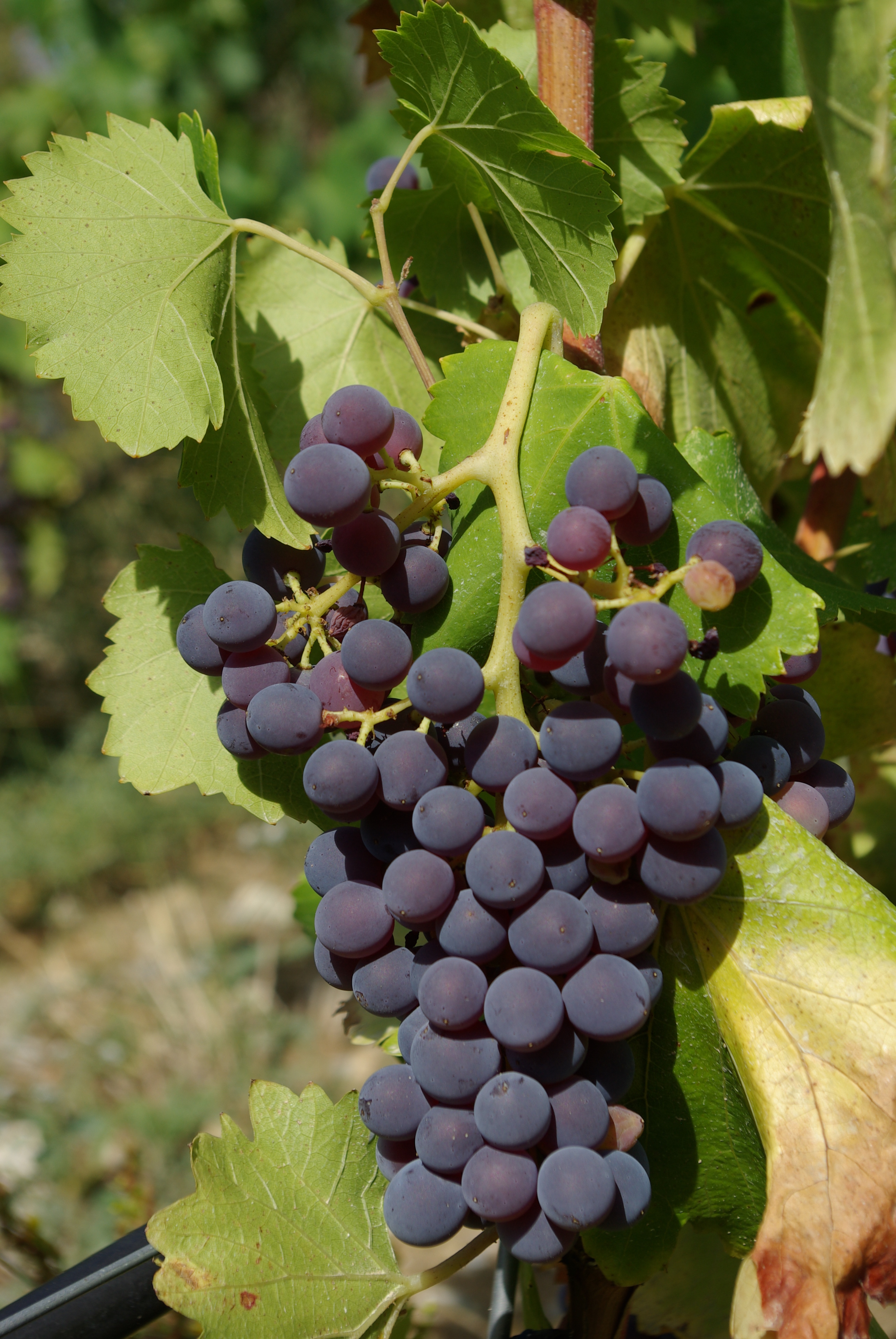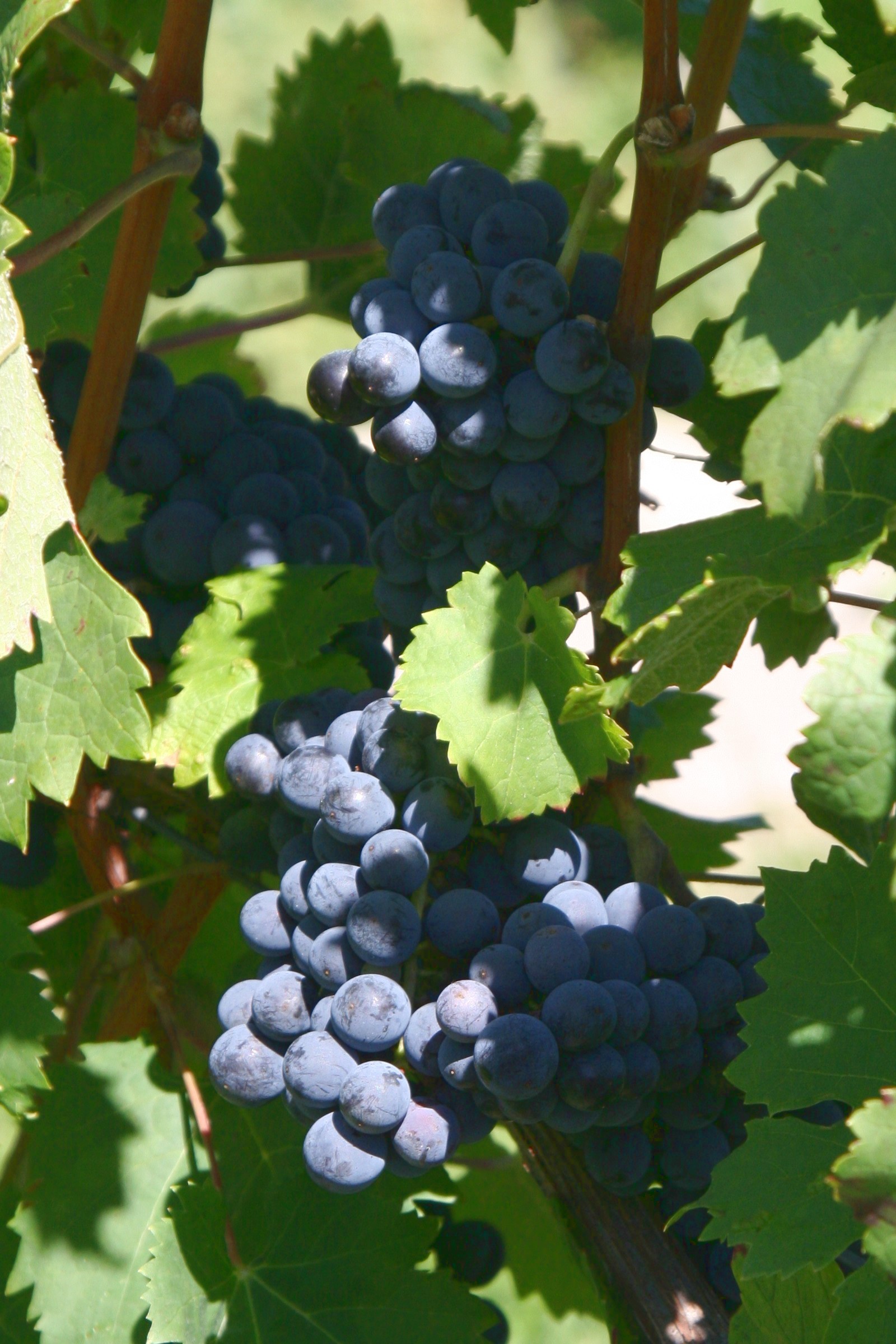|
Rocky Reach AVA
Rocky Reach is an American Viticultural Area (AVA) located within portions of Chelan and Douglas Counties between the cities Chelan and Wenatchee in central Washington state. The area is an elongated strip of land that straddles the Columbia River entirely within the vast Columbia Valley AVA. Rocky Reach is the state's 20th AVA recognized by the Alcohol and Tobacco Tax and Trade Bureau {TTB), Treasury on July 5, 2022, after reviewing the petition submitted by Whitman College professor and geologist, Dr. Kevin Pogue, on behalf of regional winemakers and vineyard owners, to establish a viticultural area named "Rocky Reach." The name "Rocky Reach" originated from 19th-century nautical nomenclature where steamboat captains navigating the Columbia River describe the rapids in a particularly rocky "stretch" or "reach" of the river. The AVA encompasses with the Columbia River and the Rocky Reach Reservoir constituting approximately 24 percent of the total area. There are 7 com ... [...More Info...] [...Related Items...] OR: [Wikipedia] [Google] [Baidu] |
American Viticultural Area
An American Viticultural Area (AVA) is a designated wine grape-growing region in the United States, providing an official appellation for the mutual benefit of wineries and consumers. Winemakers frequently want their consumers to know about the geographic pedigree of their wines, as wines from a particular area can possess distinctive characteristics. Consumers often seek out wines from specific AVAs, and certain wines of particular pedigrees can claim premium prices and loyal customers. If a wine is labeled with an AVA, at least 85% of the grapes that make up the wine must have been grown in the AVA, and the wine must be fully finished within the state where the AVA is located. Regulations The boundaries of AVAs are defined by the Tax and Trade Bureau (TTB), a component of the United States Department of the Treasury. The TTB defines AVAs at the request of wineries and other petitioners. Prior to the TTB's creation in 2003, the Treasury’s Bureau of Alcohol, Tobacco and F ... [...More Info...] [...Related Items...] OR: [Wikipedia] [Google] [Baidu] |
Wahluke Slope AVA
Established in 2006 The Wahluke Slope AVA Wahluke, was named after a Native American word for "watering place," is an American Viticultural area located within Grant County, Washington and is home to more than 20 vineyards and at least three wine production facilities. It is part of the larger Columbia Valley AVA. The 80,490 acre region features approximately 8,931 acres of vineyards: nearly 15 percent of the total wine grape acreage in the state. Top grape varieties: Merlot, Syrah, Cabernet Sauvignon, Riesling, Chardonnay, and Chenin Blanc, but this area is primarily known for Merlot and Cabernet Sauvignon. Geography and climate The Wahluke Slope AVA is located in the Wahluke Slope of Grant County, Washington. It extends from the Columbia River in the west, the Hanford Site boundary in the southwest, the north bank of the Columbia River on the south up to the Wahluke Slope Wildlife Refuge in the east, and along the elevation of the Saddle Mountains on the north. Wahluke Slo ... [...More Info...] [...Related Items...] OR: [Wikipedia] [Google] [Baidu] |
Sauvignon Blanc
is a green-skinned grape variety that originates from the Bordeaux region of France. The grape most likely gets its name from the French words ''sauvage'' ("wild") and ''blanc'' ("white") due to its early origins as an indigenous grape in South West France. It is possibly a descendant of Savagnin. is planted in many of the world's wine regions, producing a crisp, dry, and refreshing white varietal wine. The grape is also a component of the famous dessert wines from Sauternes and Barsac. Sauvignon blanc is widely cultivated in France, Chile, Romania, Canada, Australia, New Zealand, South Africa, Bulgaria, the states of Oregon, Washington, and California in the US. Some New World Sauvignon blancs, particularly from California, may also be called "Fumé Blanc", a marketing term coined by Robert Mondavi in reference to Pouilly-Fumé. Depending on the climate, the flavor can range from aggressively grassy to sweetly tropical. In cooler climates, the grape has a tendency ... [...More Info...] [...Related Items...] OR: [Wikipedia] [Google] [Baidu] |
Merlot
Merlot is a dark blue–colored wine grape variety, that is used as both a blending grape and for varietal wines. The name ''Merlot'' is thought to be a diminutive of ''merle'', the French name for the blackbird, probably a reference to the color of the grape. Its softness and "fleshiness," combined with its earlier ripening, make Merlot a popular grape for blending with the sterner, later-ripening Cabernet Sauvignon, which tends to be higher in tannin. Along with Cabernet Sauvignon, Cabernet Franc, Malbec and Petit Verdot, Merlot is one of the primary grapes used in Bordeaux wine, and it is the most widely planted grape in the Bordeaux wine regions. Merlot is also one of the most popular red wine varietals in many markets. This flexibility has helped to make it one of the world's most planted grape varieties. As of 2004, Merlot was estimated to be the third most grown variety at globally.J. Robinson (ed) ''The Oxford Companion to Wine'' Third Edition, Oxford Uni ... [...More Info...] [...Related Items...] OR: [Wikipedia] [Google] [Baidu] |
Malbec
Malbec () is a purple grape variety used in making red wine. The grapes tend to have an inky dark color and robust tannins, and are known as one of the six grapes allowed in the blend of red Bordeaux wine. In France, plantations of Malbec are now found primarily in Cahors in South West France, though the grape is grown worldwide. It is increasingly celebrated as an Argentine varietal. The grape became less popular in Bordeaux after 1956 when frost killed off 75% of the crop. Despite Cahors being hit by the same frost, which devastated the vineyards, Malbec was replanted and continued to be popular in that area. Winemakers in the region frequently mixed Malbec with Merlot and Tannat to make dark, full-bodied wines, but have ventured into 100% Malbec varietal wines more recently.J. Robinson ''Vines, Grapes & Wines'' pg 198 & 204 Mitchell Beazley 1986 A popular but unconfirmed theory claims that Malbec is named after a Hungarian peasant who first spread the grape variety throu ... [...More Info...] [...Related Items...] OR: [Wikipedia] [Google] [Baidu] |
Grenache
Grenache () or Garnacha () is one of the most widely planted red wine grape varieties in the world.Niels Lillelund: ''Rhône-Vinene'' p. 25, JP Bøger – JP/Politikens Forlagshus A/S, 2004. . It ripens late, so it needs hot, dry conditions such as those found in Spain, where the grape most likely originated. It is also grown in the Italian island of Sardinia, the south of France, Australia, and California's Monterey AVA and San Joaquin Valley. It is generally spicy, berry-flavored and soft on the palate and produces wine with a relatively high alcohol content, but it needs careful control of yields for best results. Characteristic flavor profiles on Grenache include red fruit flavors (raspberry and strawberry) with a subtle, white pepper spice note. Grenache wines are highly prone to oxidation, with even young examples having the potential to show browning (or "bricking") coloration that can be noticed around the rim when evaluating the wine at an angle in the glass ... [...More Info...] [...Related Items...] OR: [Wikipedia] [Google] [Baidu] |
Cabernet Franc
Cabernet Franc is one of the major black grape varieties worldwide. It is principally grown for blending with Cabernet Sauvignon and Merlot in the Bordeaux style, but can also be vinified alone, as in the Loire's Chinon. In addition to being used in blends and produced as a varietal in Canada and the United States, it is sometimes made into ice wine in those regions. Cabernet Franc is lighter than Cabernet Sauvignon, making a bright pale red wine that contributes finesse and lends a peppery perfume to blends with more robust grapes. Depending on the growing region and style of wine, additional aromas can include tobacco, raspberry, bell pepper, cassis, and violets. Records of Cabernet Franc in Bordeaux go back to the end of the 18th century, although it was planted in Loire long before that time. DNA analysis indicates that Cabernet Franc is one of two parents of Cabernet Sauvignon, Merlot, and Carménère. History Cabernet Franc is believed to have been established in ... [...More Info...] [...Related Items...] OR: [Wikipedia] [Google] [Baidu] |
Cabernet Sauvignon
Cabernet Sauvignon () is one of the world's most widely recognized red wine grape varieties. It is grown in nearly every major wine producing country among a diverse spectrum of climates from Australia and British Columbia, Canada to Lebanon's Beqaa Valley. Cabernet Sauvignon became internationally recognized through its prominence in Bordeaux wines, where it is often blended with Merlot and Cabernet Franc. From France and Spain, the grape spread across Europe and to the New World where it found new homes in places like California's Santa Cruz Mountains, Paso Robles, Napa Valley, New Zealand's Hawke's Bay, South Africa's Stellenbosch region, Australia's Margaret River, McLaren Vale and Coonawarra regions, and Chile's Maipo Valley and Colchagua. For most of the 20th century, it was the world's most widely planted premium red wine grape until it was surpassed by Merlot in the 1990s. However, by 2015, Cabernet Sauvignon had once again become the most widely plante ... [...More Info...] [...Related Items...] OR: [Wikipedia] [Google] [Baidu] |
Bureau Of Alcohol, Tobacco And Firearms
The Bureau of Alcohol, Tobacco, Firearms and Explosives (BATFE), commonly referred to as the ATF, is a domestic law enforcement agency within the United States Department of Justice. Its responsibilities include the investigation and prevention of federal offenses involving the unlawful use, manufacture, and possession of firearms and explosives; acts of arson and bombings; and illegal trafficking and tax evasion of alcohol and tobacco products. The ATF also regulates via licensing the sale, possession, and transportation of firearms, ammunition, and explosives in interstate commerce. Many of the ATF's activities are carried out in conjunction with task forces made up of state and local law enforcement officers, such as Project Safe Neighborhoods. The ATF operates a unique fire research laboratory in Beltsville, Maryland, where full-scale mock-ups of criminal arson can be reconstructed. The ATF had 5,285 employees and an annual budget of almost $1.5 billion in 2021. The ... [...More Info...] [...Related Items...] OR: [Wikipedia] [Google] [Baidu] |
Growing Degree-day
Growing degree days (GDD), also called growing degree units (GDUs), are a heuristic tool in phenology. GDD are a measure of heat accumulation used by horticulturists, gardeners, and farmers to predict plant and animal development rates such as the date that a flower will bloom, an insect will emerge from dormancy, or a crop will reach maturity. Introduction In the absence of extreme conditions such as unseasonal drought or disease, plants grow in a cumulative stepwise manner which is strongly influenced by the ambient temperature. Growing degree days take aspects of local weather into account and allow gardeners to predict (or, in greenhouses, even to control) the plants' pace toward maturity. Unless stressed by other environmental factors like moisture, the development rate from emergence to maturity for many plants depends upon the daily air temperature. Because many developmental events of plants and insects depend on the accumulation of specific quantities of heat, it is possi ... [...More Info...] [...Related Items...] OR: [Wikipedia] [Google] [Baidu] |
.jpg)



